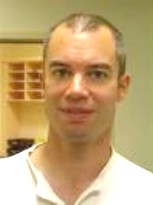|
|
|
THEMATIC PROGRAMS |
||
| May 14, 2025 |
|
|||
Thematic Program on Mathematics in Quantum
Information
|
||||
Distinguished Lecture Series
|
August 17
Communicating over Quantum Channels
Information theory started with the problem of sending information over a noisy communication channel. In this talk, I will explain to a general audience the type of tasks one would like to accomplish with a quantum communication channel, either communicating classical or quantum information and using inputs and measurements that are either entangled or not, and I will use entropy differences to quantify the rate at which information can be sent. After motivating the mathematical problems in terms of communication tasks, I will describe recent results in channel capacity, focusing on those aspects that can be understood in terms of probability theory.
August 18
The Computational Complexity of Ground States of Quantum Systems
August 20
The Computational Complexity of Time Evolution of Quantum
Systems
A typical problem in physics is to describe the ground state or time evolution of a system of N particles, each of which has 2 different states. The Hilbert space for this system has dimension 2^N, and hence a brute force approach to finding the ground state is completely impractical for even modest N. In these talks I will discuss recent results on both of these problems, including "easiness results" (such as the result that gapped one dimensional quantum systems are in NP) and "hardness results" (such as the difficulty of determining consistency of local density matrices).
Dr. Hastings has a body of work based on Lieb-Robinson bounds for the dynamics of quantum spin systems and lattice fermions that has been transformative in the sense that it has opened up new approaches to make progress on important problems in condensed matter physics. His work provides new insights in the (classical) computability of ground states and equilibrium states of standard Hamiltonians of condensed matter physics. His ideas of using Lieb-Robinson bounds to mathematically replace locality in QFT and to use it to prove exponential decay of correlations and a higher dimensional Lieb-Schultz-Mattis theorem are also examples of his ability to bring important new insights to bear on old quesions.
His proof of what is known as the area law for the local entropy in the ground state of gapped spin chains is another piece of work in the interface between quantum information, computation, and basic questions in many-body physics.
In September 2008, he literally stunned the quantum information community with a very different piece of work that solved a long standing question about additivity of certain quantities under tensor products of quantum channels. This question (or, more properly, a group of conjectures shown to be equivalent by Shor in 2003) was open despite concerted efforts by such luminaries as Shor, Holevo, King, and many others during the past 10-15 years. Hastings showed that the conjectures are false not by constructing explicit counter-examples, but by showing the existence of counter-examples by a very delicate probabilistic argument. Rather than ending the question, Hastings results show that there are pairs of quantum channels for which entangled inputs can improve the transmission of classical information, raising interesting new questions.
Speakers in the Distinguished Lecture Series (DLS) have made outstanding contributions to their field of mathematics. The DLS consists of a series of three one-hour lectures.
Index of Fields
Distinguished and Coxeter Lectures

